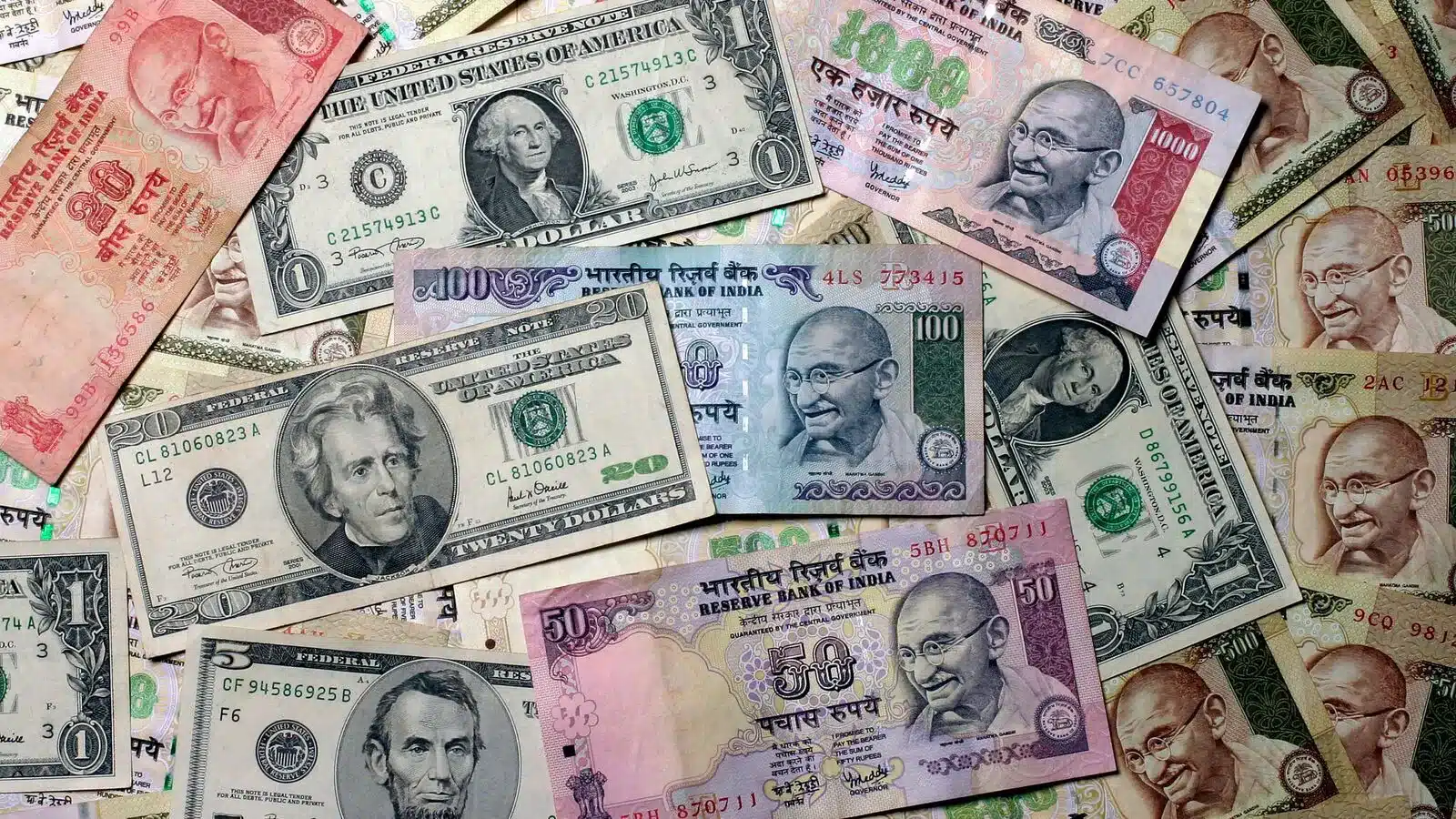Rupee Hits Record Low Amid Trade Tensions

The Indian rupee has experienced a significant decline, dropping 67 paise against the US dollar to reach a record low of 87.29 during early trading on Monday. This downturn is largely attributed to escalating trade tensions between the United States and its major trading partners, including Canada, Mexico, and China. As global markets react to these developments, investors are increasingly turning to safer assets, which has driven up demand for the US dollar.
Impact of US Tariffs on Global Markets
The recent announcement by US President Donald Trump to impose tariffs on imports from Canada, Mexico, and China has sent shockwaves through global markets. The tariffs include a 25% duty on goods from Canada and Mexico, and a 10% duty on Chinese imports. This move has raised concerns among investors about the potential for a full-blown trade war, prompting them to seek refuge in safer investments. As a result, the US dollar has strengthened, further pressuring the rupee.
Forex traders have expressed concerns that these tariffs could lead to significant foreign fund outflows from emerging markets like India. The rupee’s decline is compounded by rising demand for dollars from oil importers, who are facing increased costs due to the tariffs. Market analysts warn that the ongoing trade disputes could lead to a prolonged period of volatility in currency markets, affecting not only the rupee but also other emerging market currencies.
Domestic Market Reactions
The domestic equity market has mirrored the rupee’s decline, with the BSE Sensex falling by 575.89 points (0.74%) to close at 76,930.07. Similarly, the Nifty index dropped by 206.40 points (0.88%) to settle at 23,275.75. This decline reflects investor jitters as they react to the uncertainty surrounding global trade policies. Foreign institutional investors (FIIs) have also been active in offloading equities, with reports indicating that they sold shares worth Rs 1,327.09 crore on Saturday.
The volatility in the currency and equity markets has raised concerns among investors about the potential for further declines. Analysts suggest that the Reserve Bank of India (RBI) may need to intervene to stabilize the rupee and restore investor confidence. The RBI’s recent interventions in the forex market have aimed to reduce volatility, but the effectiveness of these measures remains to be seen.
Future Outlook for the Rupee
Looking ahead, market analysts believe that the rupee’s recent decline could be a short-term reaction to the current global uncertainties. However, they advise investors to proceed with caution in the coming days. The US dollar index, which measures the dollar against a basket of six other currencies, has surged by 1.30% to reach 109.77. This increase indicates a strong demand for the dollar, which could continue to pressure the rupee.
The range for the rupee is expected to fluctuate between 86.65 and 87.00, with expectations that the Reserve Bank will intervene to manage dollar demand. As the situation evolves, investors will need to stay informed about developments in global trade policies and their potential impact on currency markets. The ongoing trade tensions highlight the interconnectedness of global economies and the importance of monitoring geopolitical events that can influence market dynamics.
Observer Voice is the one stop site for National, International news, Sports, Editor’s Choice, Art/culture contents, Quotes and much more. We also cover historical contents. Historical contents includes World History, Indian History, and what happened today. The website also covers Entertainment across the India and World.

